#AMD Instinct Accelerator
Explore tagged Tumblr posts
Text
AMD construiește în Franța un centru AI de ultimă generație, în parteneriat cu G42 și DataOne
AMD și partenerii săi din Emiratele Arabe Unite și Franța au anunțat la AI Action Summit construirea unuia dintre cele mai performante centre de calcul pentru inteligență artificială din Franța. Centrul va fi construit în Grenoble, în parteneriat cu G42 (prin divizia sa Core42) și DataOne, și va deveni operațional până la mijlocul anului 2025. AMD și Inteligența Artificială: o infrastructură de…
#ai#AI cloud#AI computing#AI development#AI european#AI infrastructure#AI processing#AI research#amd#AMD Instinct Accelerator#AMD Ventures#artificial intelligence#bam#calcul AI#calcul de înaltă performanță#cercetare AI#cloud AI#Cloud Computing#Core42#cybersecurity#DataOne#dezvoltare AI#diagnoza#digital sovereignty#European AI#France#Franta#G42#Grenoble#high-performance computing
0 notes
Text

Record-breaking run on Frontier sets new bar for simulating the universe in exascale era
The universe just got a whole lot bigger—or at least in the world of computer simulations, that is. In early November, researchers at the Department of Energy's Argonne National Laboratory used the fastest supercomputer on the planet to run the largest astrophysical simulation of the universe ever conducted.
The achievement was made using the Frontier supercomputer at Oak Ridge National Laboratory. The calculations set a new benchmark for cosmological hydrodynamics simulations and provide a new foundation for simulating the physics of atomic matter and dark matter simultaneously. The simulation size corresponds to surveys undertaken by large telescope observatories, a feat that until now has not been possible at this scale.
"There are two components in the universe: dark matter—which as far as we know, only interacts gravitationally—and conventional matter, or atomic matter," said project lead Salman Habib, division director for Computational Sciences at Argonne.
"So, if we want to know what the universe is up to, we need to simulate both of these things: gravity as well as all the other physics including hot gas, and the formation of stars, black holes and galaxies," he said. "The astrophysical 'kitchen sink' so to speak. These simulations are what we call cosmological hydrodynamics simulations."
Not surprisingly, the cosmological hydrodynamics simulations are significantly more computationally expensive and much more difficult to carry out compared to simulations of an expanding universe that only involve the effects of gravity.
"For example, if we were to simulate a large chunk of the universe surveyed by one of the big telescopes such as the Rubin Observatory in Chile, you're talking about looking at huge chunks of time—billions of years of expansion," Habib said. "Until recently, we couldn't even imagine doing such a large simulation like that except in the gravity-only approximation."
The supercomputer code used in the simulation is called HACC, short for Hardware/Hybrid Accelerated Cosmology Code. It was developed around 15 years ago for petascale machines. In 2012 and 2013, HACC was a finalist for the Association for Computing Machinery's Gordon Bell Prize in computing.
Later, HACC was significantly upgraded as part of ExaSky, a special project led by Habib within the Exascale Computing Project, or ECP. The project brought together thousands of experts to develop advanced scientific applications and software tools for the upcoming wave of exascale-class supercomputers capable of performing more than a quintillion, or a billion-billion, calculations per second.
As part of ExaSky, the HACC research team spent the last seven years adding new capabilities to the code and re-optimizing it to run on exascale machines powered by GPU accelerators. A requirement of the ECP was for codes to run approximately 50 times faster than they could before on Titan, the fastest supercomputer at the time of the ECP's launch. Running on the exascale-class Frontier supercomputer, HACC was nearly 300 times faster than the reference run.
The novel simulations achieved its record-breaking performance by using approximately 9,000 of Frontier's compute nodes, powered by AMD Instinct MI250X GPUs. Frontier is located at ORNL's Oak Ridge Leadership Computing Facility, or OLCF.
IMAGE: A small sample from the Frontier simulations reveals the evolution of the expanding universe in a region containing a massive cluster of galaxies from billions of years ago to present day (left). Red areas show hotter gasses, with temperatures reaching 100 million Kelvin or more. Zooming in (right), star tracer particles track the formation of galaxies and their movement over time. Credit: Argonne National Laboratory, U.S Dept of Energy
vimeo
In early November 2024, researchers at the Department of Energy's Argonne National Laboratory used Frontier, the fastest supercomputer on the planet, to run the largest astrophysical simulation of the universe ever conducted. This movie shows the formation of the largest object in the Frontier-E simulation. The left panel shows a 64x64x76 Mpc/h subvolume of the simulation (roughly 1e-5 the full simulation volume) around the large object, with the right panel providing a closer look. In each panel, we show the gas density field colored by its temperature. In the right panel, the white circles show star particles and the open black circles show AGN particles. Credit: Argonne National Laboratory, U.S Dept. of Energy
3 notes
·
View notes
Photo
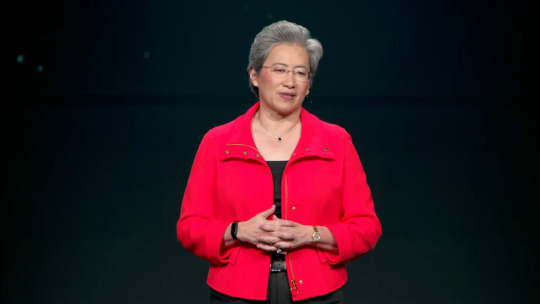
Are AMD’s latest AI advancements about to shake up the industry and challenge NVIDIA’s dominance? With next-gen Instinct MI500 accelerators and EPYC “Verano” CPUs, AMD is preparing to deliver a powerful punch into rack-scale AI solutions. At the recent Advancing AI event, AMD unveiled plans for architecture that targets performance parity with NVIDIA’s Vera Rubin lineup. Using TSMC's N2P process and innovative packaging like CoWoS-L, these accelerators promise a significant leap in AI compute capacity. AMD's focus on rack-scale AI racks, including the new Helio servers, signals a direct challenge to NVIDIA’s market leadership. This move is a game-changer for data centers and enterprise AI deployments, emphasizing energy efficiency and high-end processing. AMD’s commitment to annual product cadence ensures stable, reliable solutions for businesses now looking to expand their AI capabilities. Are you ready for AMD’s next big leap in AI hardware? Will they be able to match or surpass NVIDIA’s performance? Explore more about these innovative products at GroovyComputers.ca, your trusted partner for custom computer builds. What do you think? Will AMD’s fresh approach redefine the AI hardware race? Share your thoughts below! 🚀 #AIHardware #DataCenterSolutions #NvidiaVsAMD #AIInnovation #TechNews #CustomComputers #GroovyComputers #NextGenAI #RackScaleAI #InstinctMI500 #EPYCVerano #AIProcessing
0 notes
Photo
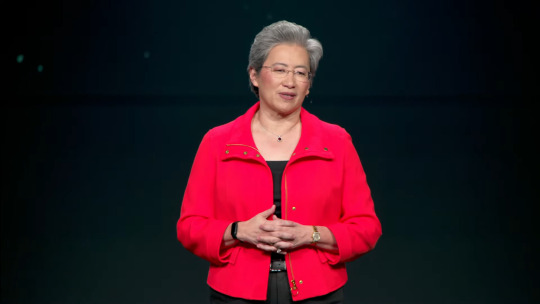
Are AMD’s latest AI advancements about to shake up the industry and challenge NVIDIA’s dominance? With next-gen Instinct MI500 accelerators and EPYC “Verano” CPUs, AMD is preparing to deliver a powerful punch into rack-scale AI solutions. At the recent Advancing AI event, AMD unveiled plans for architecture that targets performance parity with NVIDIA’s Vera Rubin lineup. Using TSMC's N2P process and innovative packaging like CoWoS-L, these accelerators promise a significant leap in AI compute capacity. AMD's focus on rack-scale AI racks, including the new Helio servers, signals a direct challenge to NVIDIA’s market leadership. This move is a game-changer for data centers and enterprise AI deployments, emphasizing energy efficiency and high-end processing. AMD’s commitment to annual product cadence ensures stable, reliable solutions for businesses now looking to expand their AI capabilities. Are you ready for AMD’s next big leap in AI hardware? Will they be able to match or surpass NVIDIA’s performance? Explore more about these innovative products at GroovyComputers.ca, your trusted partner for custom computer builds. What do you think? Will AMD’s fresh approach redefine the AI hardware race? Share your thoughts below! 🚀 #AIHardware #DataCenterSolutions #NvidiaVsAMD #AIInnovation #TechNews #CustomComputers #GroovyComputers #NextGenAI #RackScaleAI #InstinctMI500 #EPYCVerano #AIProcessing
0 notes
Text
AMD goes all-in on AI with calculated acquisitions, but Nvidia will remain king for the foreseeable future
AMD is aggressively acquiring talent to bridge the Instinct and Blackwell GPU performance gap Brium’s compiler expertise could help AMD accelerate inference without hardware-specific dependencies Untether AI’s team joins AMD, but existing customers are left without product support AMD’s recent moves in the AI sector have centered around strategic acquisitions aimed at strengthening its position…
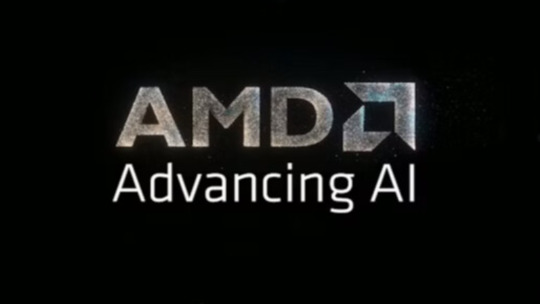
View On WordPress
0 notes
Text
AMD steps up AI competition with Instinct MI350 chips, rack-scale platform
AMD has launched its latest accelerator chips and offered a glimpse into its AI infrastructure strategy, aiming to expand its role in the enterprise market, which Nvidia currently dominates. At its 2025 Advancing AI event, the chipmaker unveiled the AMD Instinct MI350 series accelerators and previewed a rack-scale AI infrastructure platform built on open industry standards. “The MI350 Series,…
0 notes
Text
Revolutionizing AI Workloads with AMD Instinct MI300X and SharonAI’s Cloud Computing Infrastructure
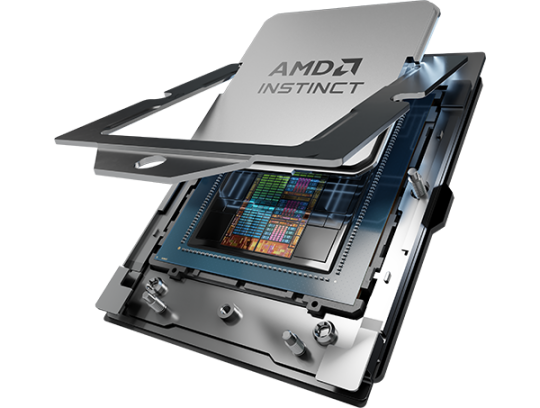
As the world rapidly embraces artificial intelligence, the demand for powerful GPU solutions has skyrocketed. In this evolving landscape, the AMD Instinct MI300X emerges as a revolutionary force, setting a new benchmark in AI Acceleration, performance, and memory capacity. When paired with SharonAI’s state-of-the-art Cloud Computing infrastructure, this powerhouse transforms how enterprises handle deep learning, HPC, and generative AI workloads.
At the heart of the MI300X’s excellence is its advanced CDNA 3 architecture. With an enormous 192 GB of HBM3 memory and up to 5.3 TB/s of memory bandwidth, it delivers the kind of GPUpower that modern AI and machine learning workloads demand. From training massive language models to running simulations at scale, the AMD Instinct MI300X ensures speed and efficiency without compromise. For organizations pushing the boundaries of infrastructure, this level of performance offers unprecedented flexibility and scale.
SharonAI, a leader in GPU cloud solutions, has integrated the AMD Instinct MI300X into its global infrastructure, offering clients access to one of the most powerful AIGPU solutions available. Whether you're a startup building new GenerativeAI models or an enterprise running critical HPC applications, SharonAI’s MI300X-powered virtual machines deliver high-throughput, low-latency computing environments optimized for today’s AI needs.
One of the standout advantages of the MI300X lies in its ability to hold massive models in memory without needing to split them across devices. This is particularly beneficial for Deep Learning applications that require processing large datasets and models with billions—or even trillions—of parameters. With MI300X on SharonAI’s cloud, developers and data scientists can now train and deploy these models faster, more efficiently, and more cost-effectively than ever before.
Another key strength of this collaboration is its open-source flexibility. Powered by AMD’s ROCm software stack, the MI300X supports popular AI frameworks like PyTorch, TensorFlow, and JAX. This makes integration seamless and ensures that teams can continue building without major workflow changes. For those who prioritize vendor-neutral infrastructure and future-ready systems, this combination of hardware and software offers the ideal solution.
SharonAI has further distinguished itself with a strong commitment to sustainability and scalability. Its high-performance data centers are designed to support dense GPU workloads while maintaining carbon efficiency—a major win for enterprises that value green technology alongside cutting-edge performance.In summary, the synergy between AMD Instinct MI300X and SharonAI provides a compelling solution for businesses looking to accelerate their AI journey. From groundbreaking GenerativeAI to mission-critical HPC, this combination delivers the GPUpower, scalability, and flexibility needed to thrive in the AI era. For any organization looking to enhance its ML infrastructure through powerful, cloud-based AIGPU solutions, SharonAI’s MI300X offerings represent the future of AI Acceleration and Cloud Computing.
#AMDInstinctMI300X#AIAcceleration#DeepLearning#GenerativeAI#HPC#MLInfrastructure#CloudComputing#DataScience#AIResearch#SharonAI
0 notes
Text
AMD debuts AMD Instinct MI350 Series accelerator chips with 35X better inferencing
AMD unveiled its comprehensive end-to-end integrated AI platform vision and introduced its open, scalable rack-scale AI infrastructure built on industry standards at its annual Advancing AI event. The Santa Clara, California-based chip maker announced its new AMD Instinct MI350 Series accelerators, which are four times faster on AI compute and 35 times faster on inferencing than prior chips. AMD…

View On WordPress
0 notes
Text
Exascale Computing Market Size, Share, Analysis, Forecast, and Growth Trends to 2032: The Race to One Quintillion Calculations Per Second

The Exascale Computing Market was valued at USD 3.47 billion in 2023 and is expected to reach USD 29.58 billion by 2032, growing at a CAGR of 26.96% from 2024-2032.
The Exascale Computing Market is undergoing a profound transformation, unlocking unprecedented levels of computational performance. With the ability to process a billion billion (quintillion) calculations per second, exascale systems are enabling breakthroughs in climate modeling, genomics, advanced materials, and national security. Governments and tech giants are investing aggressively, fueling a race for exascale dominance that’s reshaping industries and redefining innovation timelines.
Exascale Computing Market revolutionary computing paradigm is being rapidly adopted across sectors seeking to harness the immense data-crunching potential. From predictive simulations to AI-powered discovery, exascale capabilities are enabling new frontiers in science, defense, and enterprise. Its impact is now expanding beyond research labs into commercial ecosystems, paving the way for smarter infrastructure, precision medicine, and real-time global analytics.
Get Sample Copy of This Report: https://www.snsinsider.com/sample-request/6035
Market Keyplayers:
Hewlett Packard Enterprise (HPE) [HPE Cray EX235a, HPE Slingshot-11]
International Business Machines Corporation (IBM) [IBM Power System AC922, IBM Power System S922LC]
Intel Corporation [Intel Xeon Max 9470, Intel Max 1550]
NVIDIA Corporation [NVIDIA GH200 Superchip, NVIDIA Hopper H100]
Cray Inc. [Cray EX235a, Cray EX254n]
Fujitsu Limited [Fujitsu A64FX, Tofu interconnect D]
Advanced Micro Devices, Inc. (AMD) [AMD EPYC 64C 2.0GHz, AMD Instinct MI250X]
Lenovo Group Limited [Lenovo ThinkSystem SD650 V3, Lenovo ThinkSystem SR670 V2]
Atos SE [BullSequana XH3000, BullSequana XH2000]
NEC Corporation [SX-Aurora TSUBASA, NEC Vector Engine]
Dell Technologies [Dell EMC PowerEdge XE8545, Dell EMC PowerSwitch Z9332F]
Microsoft [Microsoft Azure NDv5, Microsoft Azure HPC Cache]
Amazon Web Services (AWS) [AWS Graviton3, AWS Nitro System]
Sugon [Sugon TC8600, Sugon I620-G30]
Google [Google TPU v4, Google Cloud HPC VM]
Alibaba Cloud [Alibaba Cloud ECS Bare Metal Instance, Alibaba Cloud HPC Cluster]
Market Analysis The exascale computing landscape is characterized by high-stakes R&D, global governmental collaborations, and fierce private sector competition. With countries like the U.S., China, and members of the EU launching national initiatives, the market is shaped by a mix of geopolitical strategy and cutting-edge technology. Key players are focusing on developing energy-efficient architectures, innovative software stacks, and seamless integration with artificial intelligence and machine learning platforms. Hardware giants are partnering with universities, startups, and defense organizations to accelerate deployments and overcome system-level challenges such as cooling, parallelism, and power consumption.
Market Trends
Surge in demand for high-performance computing in AI and deep learning
Integration of exascale systems with cloud and edge computing ecosystems
Government funding and national strategic investments on the rise
Development of heterogeneous computing systems (CPUs, GPUs, accelerators)
Emergence of quantum-ready hybrid systems alongside exascale architecture
Adoption across healthcare, aerospace, energy, and climate research sectors
Market Scope
Supercomputing for Scientific Discovery: Empowering real-time modeling and simulations at unprecedented speeds
Defense and Intelligence Advancements: Enhancing cybersecurity, encryption, and strategic simulations
Precision Healthcare Applications: Supporting drug discovery, genomics, and predictive diagnostics
Sustainable Energy Innovations: Enabling complex energy grid management and fusion research
Smart Cities and Infrastructure: Driving intelligent urban planning, disaster management, and IoT integration
As global industries shift toward data-driven decision-making, the market scope of exascale computing is expanding dramatically. Its capacity to manage and interpret massive datasets in real-time is making it essential for competitive advantage in a rapidly digitalizing world.
Market Forecast The trajectory of the exascale computing market points toward rapid scalability and broader accessibility. With increasing collaborations between public and private sectors, we can expect a new wave of deployments that bridge research and industry. The market is moving from proof-of-concept to full-scale operationalization, setting the stage for widespread adoption across diversified verticals. Upcoming innovations in chip design, power efficiency, and software ecosystems will further accelerate this trend, creating a fertile ground for startups and enterprise adoption alike.
Access Complete Report: https://www.snsinsider.com/reports/exascale-computing-market-6035
Conclusion Exascale computing is no longer a vision of the future—it is the powerhouse of today’s digital evolution. As industries align with the pace of computational innovation, those embracing exascale capabilities will lead the next wave of transformation. With its profound impact on science, security, and commerce, the exascale computing market is not just growing—it is redefining the very nature of progress. Businesses, researchers, and nations prepared to ride this wave will find themselves at the forefront of a smarter, faster, and more resilient future.
About Us:
SNS Insider is one of the leading market research and consulting agencies that dominates the market research industry globally. Our company's aim is to give clients the knowledge they require in order to function in changing circumstances. In order to give you current, accurate market data, consumer insights, and opinions so that you can make decisions with confidence, we employ a variety of techniques, including surveys, video talks, and focus groups around the world.
Contact Us:
Jagney Dave - Vice President of Client Engagement
Phone: +1-315 636 4242 (US) | +44- 20 3290 5010 (UK)
0 notes
Text
AMD's AI Leap: How This Chipmaker Is Outpacing the Competition in 2025!
The world of technology is witnessing a significant shift with the integration of Artificial Intelligence (AI) into various sectors. At the forefront of this revolution is Advanced Micro Devices, a company that’s making substantial strides in AI technology. Recently, AMD unveiled several innovative AI solutions, including 5th Gen EPYC processors and AMD Instinct MI325X accelerators, showcasing…
0 notes
Text
After Stargate's 64,000 GB200 AI cluster, Oracle is teaming up with Nvidia's archrival on multi-billion dollar contract
AMD targets Nvidia’s Blackwell with upcoming Instinct MI355X accelerator Oracle plans massive 30,000-unit MI355X cluster for high-performance AI workloads That’s in addition to Stargate, Oracle’s 64,000-GPU Nvidia GB200 cluster While AI darling Nvidia continues to dominate the AI accelerator market, with a share of over 90%, its closest rival, AMD, is hoping to challenge the Blackwell lineup…
0 notes
Photo
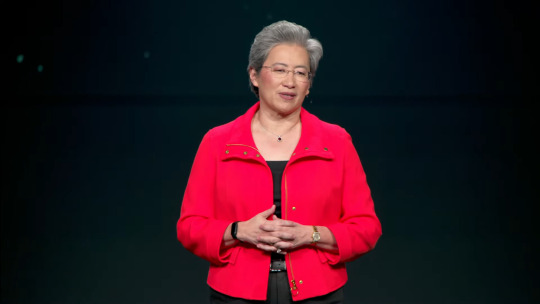
Did you know that AMD’s CEO Lisa Su predicts the AI data center accelerator market will reach a staggering $500 billion CAD by 2028? With demand for inferencing growing rapidly, AI hardware is more critical than ever. AMD is planning big moves in this space, focusing on creating powerful compute engines like the Instinct MI350 lineup, built on TSMC’s 3nm process, and expanding its software ecosystem with ROCm 7. This strategic push puts AMD in direct competition with NVIDIA and signifies a promising future for AI hardware enthusiasts and data center innovations. If you're looking to upgrade your AI-driven PC or data center setup, consider a custom build from GroovyComputers.ca. They offer tailored PC solutions optimized for the latest tech trends and performance demands. Explore their custom builds today and stay ahead in this fast-evolving AI era. What future AI application are you most excited to see powered by these advancements? Share your thoughts below! #AI #DataCenter #Hardware #TechNews #AMD #NVIDIA #AIAccelerators #CustomPC #GigabitComputing #Innovation #TechTrends #GroovyComputers #AIInferences #FutureOfTech
0 notes
Photo

AMD unveils ambitious plans for 2027, including the Verano CPU, Instinct MI500X GPU, and next-generation AI rack solutions. This progress signals a major leap in AI and data center technology. As AMD accelerates its roadmap, their new Verano processors will boost performance density, while the Instinct MI500X is geared to handle intensive AI workloads. These innovations are set to challenge industry leaders like Nvidia and Intel, promising faster, more scalable AI infrastructure. For those interested in custom, high-performance builds, GroovyComputers.ca offers tailored systems using top-tier components. Whether you need a powerhouse for AI or gaming, they can design a rig that fits your needs — discover more at GroovyComputers.ca. Are you ready for the next wave of AI technology? Share your thoughts below and explore the future with a custom build today! #AIBuilds #TechInnovation #GamingPC #DataCenter #CustomPC #AIHardware #HighPerformance #GroovyComputers #FutureTech #CPU #GPU #AIrack #CustomBuilds
0 notes
Text
AMD says Instinct MI400X GPU is 10X faster than MI300X, will power Helios rack-scale system with EPYC 'Venice' CPUs
AMD gave a preview of its first in-house designed rack-scale solution called Helios at its Advancing AI event on Thursday. The system is set to be based on the company’s next-generation EPYC ‘Venice’ processors, will use its Instinct MI400-series accelerator, and will rely on network connections featuring the upcoming Pensando network cards. Overall, the company says that the flagship MI400X is…
0 notes